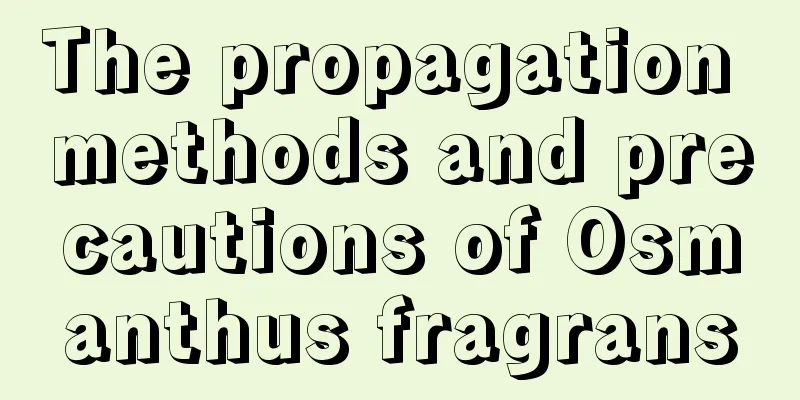How to cultivate Oncidium

|
Oncidium is a popular orchid with a lightweight plant, light stems and lovely flowers, making it perfect for home cultivation. Oncidium has rich and diverse colors, a long flowering period, and high ornamental value. It is one of the mainstream commodity flowers in the domestic and international flower markets. Below, the editor will introduce the cultivation methods of Oncidium, let’s take a look. 1. Soil selection Oncidium prefers a relatively dry environment with good drainage and air permeability. Therefore, when choosing soil, you should pay attention to its air permeability and drainage. You can choose to make the culture medium by mixing fern roots, peat soil, charcoal, vermiculite, moss or pine bark , sphagnum moss and other materials. A layer of broken tiles or bricks can be laid on the bottom of the pot to facilitate ventilation and drainage. 2. Lighting management Oncidium prefers a semi-shady environment and can receive sufficient direct sunlight in winter, which is conducive to its flowering. However, in other seasons, shading measures need to be taken to prevent leaf burns. Usually, it is more appropriate to control the shading rate at 40-50%. 3. Temperature control The growing temperature of Oncidium varies depending on its variety. The growth temperature of thick-leafed Oncidium should not be lower than 12℃, and the suitable growth temperature is 18-25℃, while the growth temperature of thin-leafed Oncidium should not be lower than 8℃, and the suitable growth temperature is 10-22℃. It is best to keep the temperature above 12℃ in winter to prevent frostbite. 4. Moisture management Oncidium likes dryness. When the soil surface is relatively dry, it should be watered thoroughly. During the growing season, you should increase the amount of watering, once in the morning and once in the evening. In winter, you should reduce the amount of watering and the frequency to promote flowering. Stop watering when the temperature is below 10℃. Oncidium prefers a higher relative humidity of the air, 60%-80% is appropriate. Usually, you should spray water on the leaves and the surrounding environment to maintain the air humidity. 5. Fertilization management From spring to autumn, apply low-concentration nitrogen, phosphorus and potassium compound fertilizer to Oncidium every 20 days or so, in a ratio of 1:1:1, or spray the leaves with a concentration of 0.05-0.1%. Do not fertilize during the winter when temperatures are low. When potting, you can apply enough base fertilizer, such as well-rotted bone meal and coconut shells. 6. Notes Good ventilation is required during the growing period of Oncidium, especially in spring and summer. Windows should be opened frequently for ventilation to reduce the chance of disease and pests. When the temperature is too high in summer, the Oncidium needs to be cooled down and shaded in time to prevent leaf burns. The above is an introduction to the cultivation methods of Oncidium. Oncidium repotting is usually done after flowering. For non-flowering plants, it can be done before the growth period, such as when the weather turns cooler in early spring or autumn. When repotting, pour out the old soil and replace it with newly prepared nutrient soil.
|
<<: Maintenance tips for dragon beard tree
>>: Maintenance tips for Hongyun Dangtou
Recommend
How to grow bamboo indoors
Planting time The best time to transplant or pot ...
How to prune gardenia during its dormancy period
During the dormant period of gardenia, heavy prun...
When does the tree bloom?
When does the tree bloom? The tree usually blooms...
The difference between Banyan tree and Banyan tree
1. Leaf Difference The leaves of Ficus microcarpa...
The reason why the stems of potted lilies turn black
1. Poor ventilation Potted lilies need good venti...
How to water Podocarpus
Watering tips for Podocarpus Podocarpus is an eve...
What to do about Monstera black spot disease, what medicine to use for anthracnose
1. What to do about black spot disease 1. Cause o...
How to breed succulent balls
1. Operation method 1. Planting seeds The female ...
How to propagate Xanthoceras sorbifolia
How to propagate Xanthoceras sorbifolia There are...
Can I grow succulents with sawdust?
Can wood chips be used to grow succulents? Sawdus...
The causes and solutions of yellowing leaves of bougainvillea
Improper watering Bougainvillea has different wat...
Summer water spinach planting management
Water spinach is a common leafy vegetable in summ...
Is the hawthorn tree a shade or sun-loving plant?
Does the hawthorn tree prefer shade or sun? The h...
Advantages and disadvantages of Susa rose
The Susa rose is a cut flower variety from the Ne...
Epimedium Growth Environment Conditions and Characteristics
Epimedium Growth Environment Conditions and Requi...









